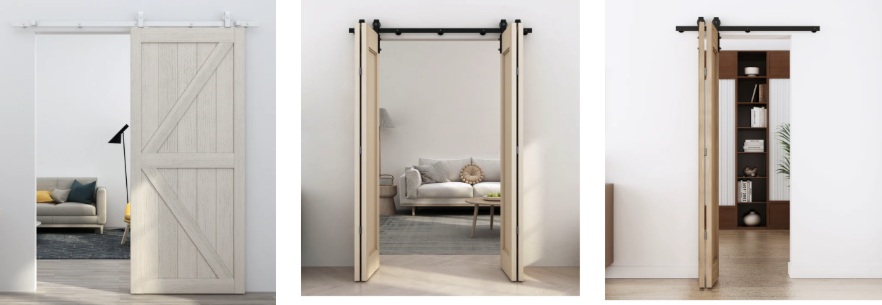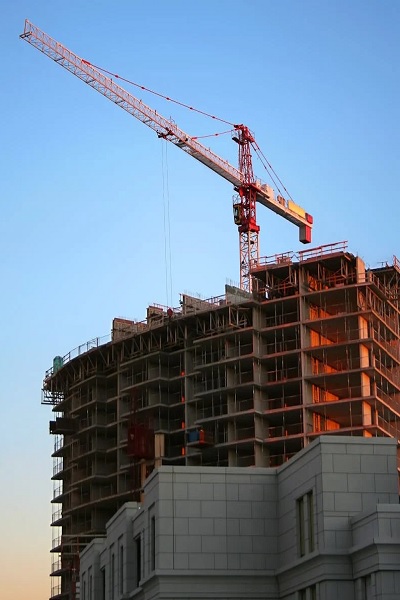
by admin | Jul 17, 2025 | Home Improvement
Barn doors have evolved from rustic farmhouse staples to must-have design elements in contemporary interiors. Whether you’re drawn to the warmth of timber barn doors, the space-saving functionality of a sliding barn door, or the versatile appeal of a bifold barn door, these stylish alternatives to traditional doors can transform any space. In this comprehensive guide, we’ll explore the benefits, styles, and ideal applications of each type—so you can make an informed choice for your home.
Why Choose Barn Doors?

Barn doors offer a perfect blend of form and function, making them a popular choice for modern homes. Here’s why they’re worth considering:
✔ Space-Saving Design – Ideal for tight areas where swinging doors aren’t practical
✔ Aesthetic Versatility – Complements farmhouse, industrial, and contemporary interiors
✔ Customizable Options – Available in various materials, finishes, and configurations
✔ Easy Installation – Many kits come with pre-assembled hardware for DIY-friendly setups
Now, let’s dive into the three most sought-after styles: timber barn doors, sliding barn door, and bifold barn door.
1. Timber Barn Doors: Rustic Charm Meets Timeless Elegance
Why Choose Timber?
There’s something undeniably warm and inviting about natural wood. Timber barn doors bring organic texture and character to any space, making them perfect for:
- Farmhouse-style homes
- Coastal or cabin-inspired interiors
- Rooms where a natural, earthy aesthetic is desired
Popular Timber Options
- Reclaimed Wood – Eco-friendly with a weathered, vintage look
- Solid Hardwood (Oak, Walnut, or Teak) – Durable and rich in grain patterns
- Stained or Painted Timber – Customizable to match your decor
Best Applications
✔ Master bedroom doors
✔ Home office dividers
✔ Pantry or laundry room entries

2. Sliding Barn Door: The Ultimate Space-Saving Solution
Why Choose a Sliding Design?
A sliding barn door is perfect for rooms where floor space is limited. Unlike traditional doors that swing open, these glide smoothly along a wall-mounted track, making them ideal for:
- Small bathrooms or bedrooms
- Closets and storage areas
- Open-plan living spaces needing flexible room dividers
Design Variations
- Modern Minimalist – Sleek metal frames with glass panels
- Industrial Chic – Blackened steel hardware with distressed wood
- Contemporary – High-gloss finishes in bold colors
Installation Tips
- Ensure proper wall support for heavy doors
- Choose soft-close mechanisms for noise-free operation
- Measure carefully to avoid gaps (especially for privacy areas like bathrooms)

3. Bifold Barn Door: Flexible Functionality for Tight Spaces
Why Choose a Bifold Style?
A bifold barn door offers a unique hybrid design—folding in half as it opens, making it perfect for ultra-compact spaces. Benefits include:
- Requires less clearance than sliding doors
- Provides wider access when fully opened
- Ideal for closets, pantries, or room dividers
Material & Style Options
- Wooden Bifolds – Classic and warm
- Metal-Framed Glass – Modern and light-enhancing
- Louvered Designs – Great for ventilation in laundry rooms or mudrooms
Best Uses
✔ Wardrobe or walk-in closet entries
✔ Kitchen pantry doors
✔ Room partitions in studio apartments
How to Choose the Right Barn Door for Your Home
Consider Your Space
- Small Rooms? → Opt for a sliding barn door or bifold barn door
- Going for Rustic? → Timber barn doors add instant warmth
- Need Light Flow? → Glass-paneled designs maintain brightness
Match Your Interior Style
- Farmhouse → Distressed wood with black iron hardware
- Industrial → Steel frames and matte finishes
- Scandinavian → Light oak with minimalist handles
Budget & Maintenance
- Solid Timber → Higher cost but long-lasting
- Engineered Wood → Budget-friendly and low-maintenance
- Metal/Glass → Modern but may require frequent cleaning
Where to Learn More About Barn Doors
Ready to explore barn doors for your home? Reputable suppliers offer extensive collections, from classic timber barn doors to innovative bifold barn door designs. To learn more, browse curated selections, read customer reviews, and consult sizing guides to ensure the perfect fit for your space.
Final Thoughts
Barn doors are more than just functional—they’re design statements that enhance both aesthetics and practicality. Whether you prefer the natural beauty of timber barn doors, the efficiency of a sliding barn door, or the compact convenience of a bifold barn door, there’s a style to suit every home.
Ready to upgrade your interiors? Take the next step and learn more about the perfect barn door for your space today!

by admin | Jul 26, 2024 | Home Improvement
Embarking on a career as a registered builder in New South Wales (NSW) offers an exciting opportunity to shape the skyline and contribute to the state’s construction industry. Achieving builder registration not only enhances your professional standing but also ensures that you comply with the rigorous standards and regulations governing the industry. This comprehensive guide will walk you through the essential steps, qualifications, and benefits of becoming a registered builder in NSW.
Understanding Builder Registration
In NSW, builder registration is overseen by the NSW Building Commission, operating under NSW Fair Trading. This registration allows you to legally undertake building projects, from residential renovations to large-scale commercial constructions. Being registered enhances your credibility, helps you meet legal requirements, and provides assurance to clients about the quality and compliance of your work.
Before starting your journey toward becoming a registered builder, it’s essential to understand the specific qualifications and steps required to obtain a builders licence, which vary by state and territory.
Qualifications and Experience Requirements
Educational Qualifications
To qualify for builder registration in NSW, you need to have relevant educational qualifications. Typically, this involves obtaining a Certificate IV in Building and Construction, which covers fundamental aspects of building, including project management, safety, and compliance. However, many aspiring builders pursue a higher qualification, such as a Diploma of Building and Construction, to broaden their knowledge and enhance their career prospects.
These qualifications are crucial as they provide a comprehensive understanding of building principles, project management, and the legalities involved in construction. Ensure that your education provider is accredited and recognized by NSW Fair Trading to meet the registration requirements.
Practical Experience
In addition to formal education, practical experience is essential. You must demonstrate significant hands-on experience in the building industry, typically involving at least two years in a supervisory or management role. This experience should showcase your ability to manage building projects effectively, ensuring they are completed on time, within budget, and in compliance with all relevant regulations.
Documenting your work experience is crucial. Keep detailed records of your roles and responsibilities, projects completed, and any relevant certifications or endorsements. This documentation will be an important part of your registration application.
Industry Knowledge
A thorough understanding of building codes, standards, and regulations in NSW is vital. Familiarise yourself with the Building Code of Australia (BCA), Australian Standards, and local council requirements. This knowledge ensures that you can effectively manage and execute building projects while adhering to safety and quality standards.
The Registration Process
Step 1: Complete the Required Training
Enroll in and complete the necessary educational courses. For most candidates, this means obtaining a Certificate IV or higher in Building and Construction. Ensure that the course you choose meets the NSW Fair Trading requirements.
Step 2: Gain Relevant Experience
Accumulate the required practical experience in the building industry. This experience should be in a role that demonstrates your ability to supervise and manage building projects. Ensure that your experience is documented and verifiable, as this will be a key component of your registration application.
Step 3: Prepare Documentation
Gather all required documents for your registration application. This typically includes proof of your educational qualifications, evidence of work experience, a criminal history check, and a financial viability assessment. Make sure all documents are up-to-date and accurately reflect your qualifications and experience.
Step 4: Submit Your Application
Apply for builder registration through NSW Fair Trading. Your application will be reviewed to ensure you meet all the necessary criteria. This process may involve an interview or assessment to verify your qualifications and experience. Be prepared to provide additional information or documentation if requested.
Step 5: Pass the Examination
Depending on the type of registration you’re applying for, you might need to pass a written or practical examination. This examination is designed to assess your knowledge and competency in building practices, regulations, and project management.
Step 6: Obtain Insurance
As a registered builder, you will be required to hold appropriate insurance coverage. This includes home warranty insurance or public liability insurance, which protects you and your clients in the event of any issues or claims arising from your work.
Step 7: Receive Your Registration
Upon successful completion of the application process and any required examinations, you will receive your builder registration. This registration allows you to legally operate as a builder in NSW and undertake various building projects.
Ongoing Professional Development
Achieving builder registration is just the beginning. Maintaining your registration requires ongoing professional development and adherence to industry standards. Here’s what you need to do:
Stay Informed
The construction industry is constantly evolving, with new regulations, standards, and technologies emerging regularly. Stay informed about changes to building codes, safety regulations, and industry best practices. Subscribe to industry newsletters, attend seminars, and participate in professional forums to keep up-to-date.
Complete Continuing Education
Engage in professional development activities to enhance your skills and knowledge. This might include attending workshops, enrolling in additional courses, or gaining new certifications. Continuing education helps you stay competitive and ensures that you remain compliant with the latest industry standards.
Renew Your Registration
Builder registration is not a one-time process. You must renew your registration periodically, providing updated documentation and meeting any new requirements set by NSW Fair Trading. Ensure that you keep track of renewal deadlines and complete any necessary paperwork or assessments in a timely manner.
Benefits of Being a Registered Builder
Enhanced Credibility
Being a registered builder significantly enhances your credibility in the industry. Clients and stakeholders can trust that you adhere to professional standards and regulatory requirements. This trust can lead to more opportunities and a strong reputation in the market.
Access to Larger Projects
Builder registration often opens doors to larger and more complex projects. With registration, you can undertake a wider range of projects, including high-profile commercial constructions and significant residential developments, which can expand your business opportunities and growth potential.
Legal Compliance
Registration ensures that you comply with all legal and regulatory requirements in NSW. This helps you avoid legal issues and potential penalties associated with non-compliance. It also provides a structured framework for managing and executing building projects.
Professional Growth
Being a registered builder offers opportunities for continued professional development and networking within the industry. You can connect with other professionals, learn from their experiences, and participate in industry events that can further your career and business prospects.
Conclusion
Becoming a registered builder in NSW is a significant achievement that requires a combination of education, practical experience, and ongoing commitment to industry standards. By following the outlined steps and maintaining your registration, you can build a successful career in the construction industry, contributing to the development of quality and compliant building projects across the state. Stay informed, engage in professional development, and uphold the highest standards to ensure ongoing success and fulfilment in your building career.





